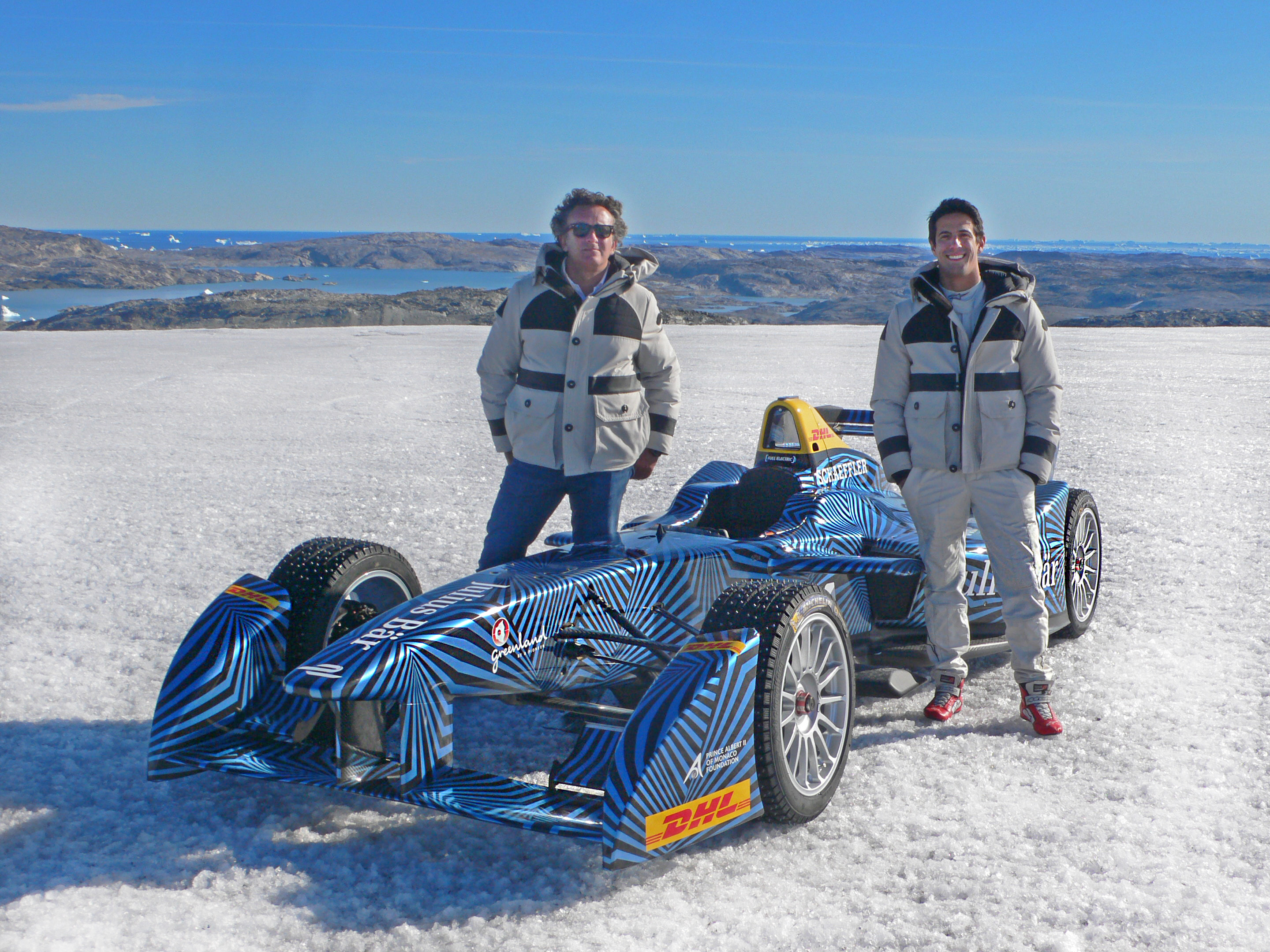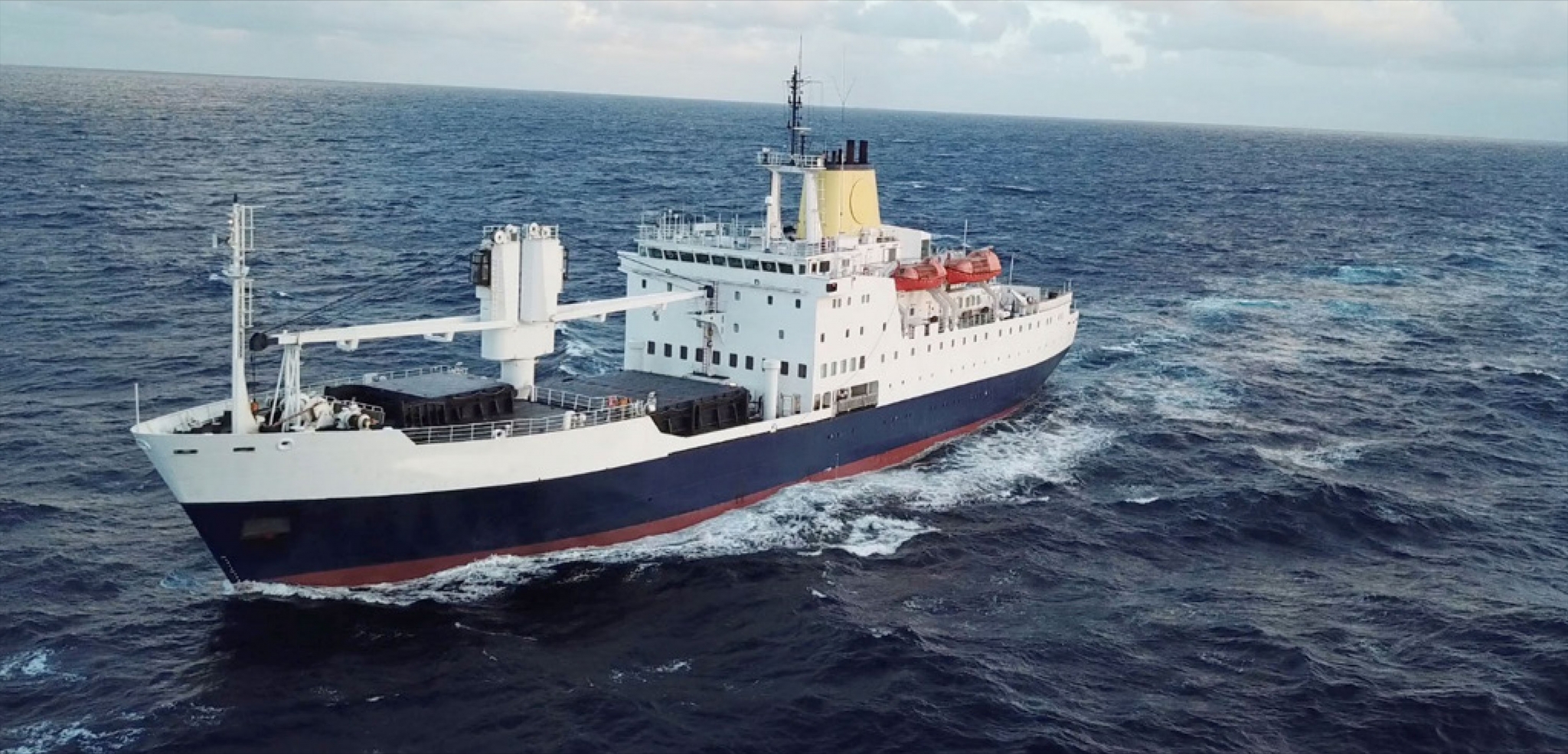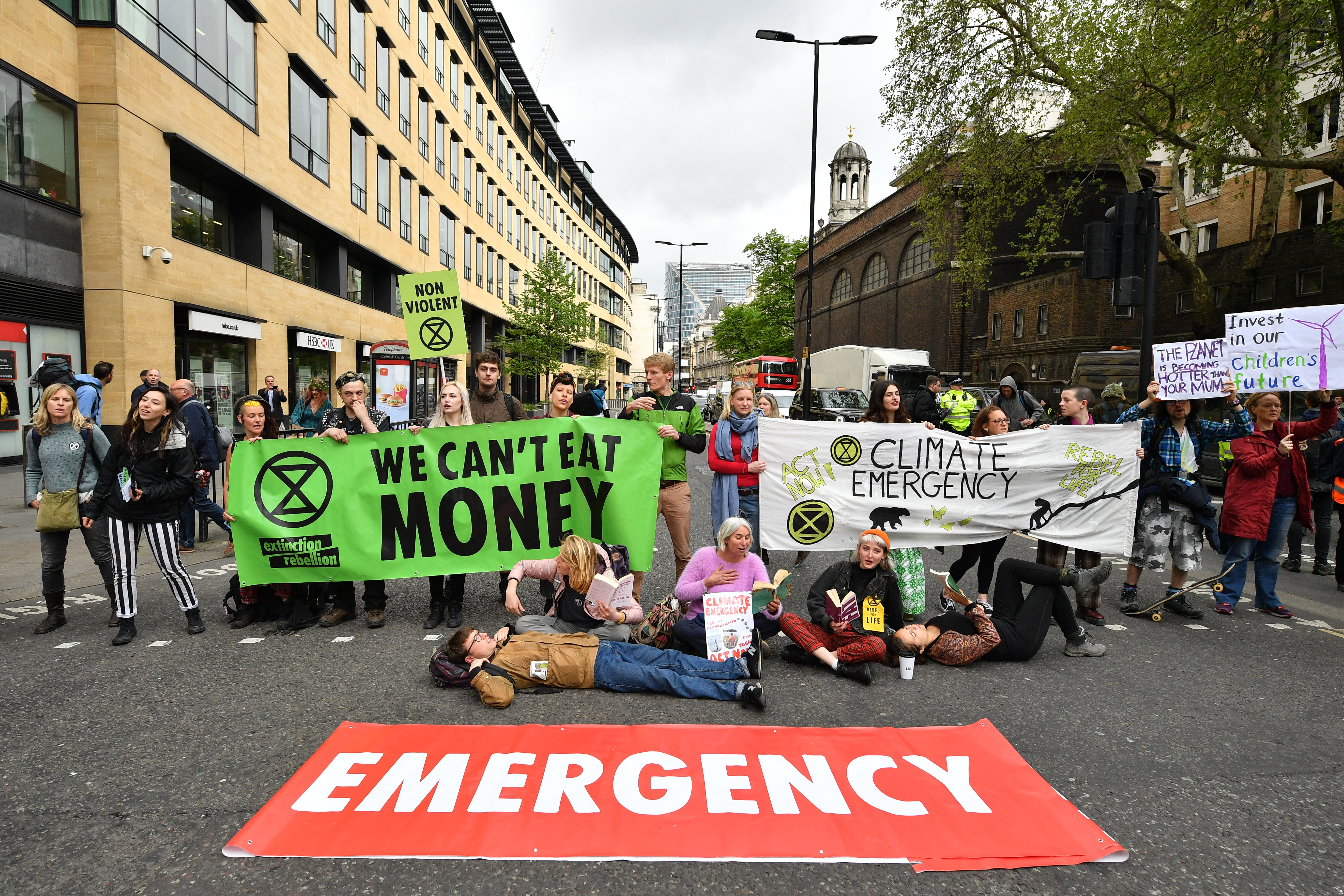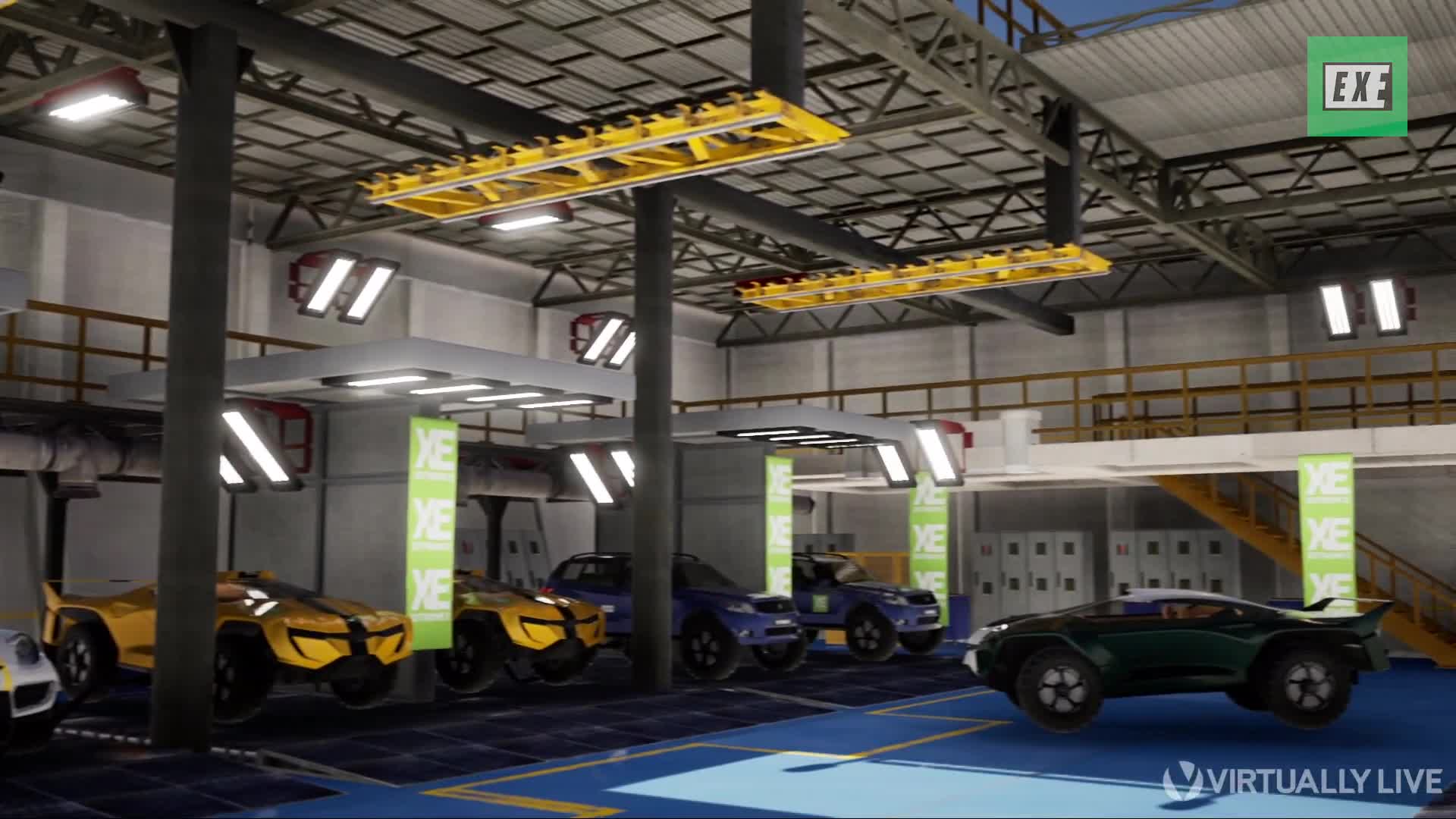Extreme E: the off-road racing series on an eco trip
Alejandro Agag, the man behind Formula E, has a new electric racing series in the works. But this time, he's going off-road with a mission to highlight climate change
ON A clear day the view from Alejandro Agag’s ninth floor corner office in Hammersmith, west London, is spectacular. Across to the east are Hyde Park and the London Eye, and beyond that the Shard and other gleaming skyscrapers dominate the vista. But it’s what’s going far below those towering peaks that dominates Agag’s thoughts.
The 48-year-old businessman and former politician founded Formula E, the world’s first (and officially sanctioned) electric single seater racing series, in 2014. The series came about after the FIA, motor sport’s governing body, realised that amid toughening vehicle emissions standards, electric road cars were increasingly inevitable.
In the UK, from 2040 all new cars sold will be electrified in a bid to remove “conventional” diesel and petrol vehicles, which emit exhaust gases (including carbon dioxide, which contributes to global warming, and nitrogen oxides and particulate matter, which are harmful to health and have been linked to 40,000 premature deaths per year) from our roads.
Significant change could come even sooner. Electric vehicle charging company Chargemaster estimates one million electrified cars will be sold in 2022, accounting for around 10% of all new car sales.
FIA president Jean Todt and Agag realised that what goes on at racing circuits would need to reflect what’s going on in car showrooms, at least in terms of the fuel used.
Against many expectations, the series appears to be going from strength to strength, with top name drivers and car manufacturers lining up to take part (Audi, BMW, Jaguar, DS Automobiles, Nissan and Nio are already involved, with Porsche and Mercedes joining for the 2019-2020 championship). Agag also expects Formula E to make a profit for the first time next season.
Now, with the single seater series seemingly in rude health, Agag’s attention has turned to another project: an off-road racing series involving electric SUVs, which he has called Extreme E.
“I was brainstorming with a good friend of mine, [former racing driver turned team boss] Gil de Ferran,” says the Spaniard while stirring two sugars into a double espresso. “I had always the idea in my mind that we had to create something for the cars that manufacturers sell on the street. A Formula car, you cannot go out and buy it on Monday, but an SUV, if you see it racing, you can say, ‘I like that one’. Then you can go and buy.”
Given the success of Formula E, it made sense to use electric SUVs.
“Gil came with the idea that if you need to do it, you need to do it in the most remote, extreme locations. Because, if you do it in cities or at race tracks, it’s just more of the same.”

Having come up with the kernel of the plan, the project took on a much more environmental angle during a conversation with Fisher Stevens, the filmmaker behind Oscar-winning 2009 documentary The Cove.
“He said, if you go to these remote locations, and they’re beautiful, and you go with 12 cars and you destroy them, that’s a disaster.”
Well, quite. Before the interview I had been sent a document with some of Extreme E’s “key messages”, which states “five events will be staged in locations of outstanding natural beauty, which are under threat from climate change and other challenges.”
How is tearing through areas of outstanding natural beauty compatible with conservation? There was something lost in translation, it turns out: “We’re not going to go to areas with outstanding natural beauty. That’s not where we’re going. I think this is a really good point and is a very valid question to raise. And I think this question will be answered when we show where we’re racing.”
In fact, says Agag, who is providing much of the funding for the series himself, Extreme E will visit five locations that have already seen the effects of man-made climate change: an area that has become desert; the Arctic, which is facing melting ice caps; the Amazon Rainforest, which is suffering from deforestation; the Himalayas, where mountain glaciers are retreating; and an island in the Indian Ocean, where rising sea levels and plastic pollution are threatening the ecosystem. (“The President of Mauritius has just declared war on plastic,” Agag tells me.)
“As soon as people see where we’re racing, they will go, ‘Oh, my God, really? That’s like that today?’ We are going to a place near the [North] Pole where you can see that the ice has disappeared … we want to showcase where the ice has gone. And we’ll go there we will try to do something about it.”

One of the main ways Extreme E will do this is through TV coverage. The initial idea was to run the races in private and then release a documentary, produced by Stevens, who became Extreme E’s Creative Director, which showed the racing but also highlighted the environmental challenges in those locations. But Agag claims he was forced into changing tack after broadcasters bit his arm off for rights.
Now, when the racing begins in February 2021, viewers will be able to watch the races live on TV (no spectators will be invited to attend the events) but also catch a separate documentary about the environmental issues shortly after the event has taken place. The two shows can be bought separately or as a package, says Agag.
Beyond this, there will be more practical efforts by Extreme E to contribute to the local communities.
“In the Amazon, we will try to start a program to plant trees. In the Himalayas, we’re going to start a program to source solar power for the local communities. In the ocean areas that are polluted by plastic, we’re going to put in place and support programs to clean up those pieces of plastic.”
Even so, the environmental message seems even more like a cynical marketing ploy when you learn the organisers and competitors will be travelling around the world in a 7,000-tonne ship called the RMS St Helena, a former Royal Mail ship-turned luxury cruise liner. Shipping is known to be one of the worst offenders when it comes to CO2 emissions.

According to the UN International Maritime Organisation, international shipping accounts for about 2.2% of all global greenhouse gas emissions and 2.1% of CO2 emissions, which doesn’t sound like a lot but is roughly the same as is produced by Germany.
Oceana, an environmental organisation devoted to ocean conservation, points out that: “If global shipping were a country, it would be the sixth largest producer of greenhouse gas emissions. Only the United States, China, Russia, India and Japan emit more carbon dioxide than the world’s shipping fleet.”
So what on Earth is Extreme E doing contributing to this problem, I ask. Surely the series’ environmental message is completely at odds with cruising around the world in what could be seen as a floating gin palace full of super-rich motorsport tycoons?
The challenge fails to ruffle Agag. “If we were to fly everything for the championship — which we do for Formula E, because there is no other way — for every thousand tonnes of CO2 emitted, by using St Helena we emit only 300,” he claims. “So you only emit one third of the total emissions by having the boat.”
Who worked that out, I ask. “We’ve done a study with our consultants — environmental consultants — and they came out with this information. We can give you the report.”
Driving.co.uk has been sent a slide from a report, published in November 2017 by Quantis, the sustainability consultants, that rates the sea freight carbon footprint of the five-round Extreme E series at 4,500 tonnes CO2-eq over 40,000km, versus 12,300 tonnes CO2-eq over 34,000km by flying the equipment around.
There’s no mention of carbon emissions from the flights the organisers, teams and competitors will presumably need to take, in order to travel to and from the boat. However, an Extreme E spokesperson told us that, as with Formula E, freight is expected to account for the lion’s share (75%) of the carbon footprint of the series.
“Once we have more clarity on the locations and the number of people required on site we will do a full Life Cycle Assessment including business travel (they currently represent 12% of Formula E impact), meals and onsite infrastructure,” they added via email.
To reduce CO2 emissions further the St Helena is undergoing some carbon-reducing updates during refitting in Liverpool.
“It’s going through a phase of cleaning up, if you like,” Agag tells me. “We have done already some changes on the technology on the motors and so on. Another drastic one [is changing] from heavy fuel; we are now on marine fuel and on the way to biofuel. That transition is going to happen.”
Agag says the ship has also been fitted with “the most advanced filter technology” for the exhaust, and says he’s even looking into what sound like fairly outlandish ideas, including “kites” and “different sources of wind [capture]”, that he believes will reduce fuel consumption by 10-15%.
But he admits completely eliminating CO2 emissions from the boat will be impossible in the foreseeable future. “We wish we can make it electric — it’s not feasible yet.”
Instead, the St Helena will be made effectively carbon neutral via carbon offsetting, Agag says.
He appears to have thought of everything. But has he? Many people are concerned about mining of cobalt, a key component in the lithium-ion batteries that power electronic devices and electric cars. Cobalt consumption was expected to exceed 122,000 tonnes in 2018, according to research firm CRU Group, up from 75,000 tonnes in 2011.
While cobalt can be found in many countries, recent media reports have highlighted the increase in mining in developing nations such as Congo, where poor — possibly dangerous — working conditions have been exposed, and corruption and child labour are prevalent.
“That is definitely a concern,” admits Agag. “It’s a big, big concern for the whole supply of battery minerals. We take the view that, obviously, there are always better possibilities, there are always ways to improve. But in general, progress will need some kind of compromise.”
Agag believes “extreme environmentalists” such as Extinction Rebellion, the group that brought certain parts of London to a standstill with blockades of roads in central London earlier this year, are very important in raising awareness of such issues. But real change, he says, requires buy-in from business.
“I don’t want to go back to the Stone Age and I don’t think the masses want to go back to the Stone Age,” he says. “So we need to find real solutions in which we can keep more or less the same welfare situation. People need to have hot water in their house, need to have heating, need to be able to move around, need to be able to do business, need to travel around the world.
“One solution is not to take planes, but that is not a real solution; the real solution is that the planes are electric. Of course, to have electric planes, you will need that little tiny amount of cobalt in every battery that is mined in the wrong way in Congo. I think you cannot get rid of that. We will have to find compromises everywhere in order to move slowly in the right direction.
“Everyone has a role to play. And don’t get me wrong, I think those guys from Extinction Rebellion and so on, they do have a role to play, which is to really raise the awareness so high that private companies can then, like us, thrive on the right direction. And the companies that are not going in the right direction, don’t thrive.”

Has Agag spoken to environmental organisations? Has Greenpeace, for example, been approached for support?
“Absolutely. The reaction has actually been positive… or wait and see,” he says. “You know, they have been, I must say, very respectful. Of course, there can be objections, very immediate objections, mainly around where we are going to race and what are we going to do in those places.
“As long as you do something that is authentic, and that is improving things, environmental organisations will be with you. But you have to be authentic. If we go somewhere that is completely destroyed, everyone is going to be pushing with us.”
But what about the racing? If the sporting side of Extreme E is dull, the whole project could collapse, making it a colossal waste of time and resources.
Time will tell, but the format is intriguing. A maximum of 12 teams take part, split into two groups of six. Each team will race the other five teams in their group one-on-one in a traditional round-robin format. The top four teams in each group will then go through to the finals, during which the eight cars fight it out in a knock-out system with quarter-finals, semi-finals, with a final to decide the winner. It’s a system that will be familiar to many fans of team sports, from football to tennis.
The off-road stages will be interesting, of course, aside from the fact that they’ll be located in some of the world’s most at-risk environments. The four- to six-mile long courses will feature a series of virtual gates to be navigated through by drivers, eliminating the need for real barriers and gates to be installed in these already damaged environments. And as mentioned, fans will not be lining the edges, and there will be no grandstands holding hundreds of eager spectators. Don’t expect any signage, either: the organisers say that wherever possible branding and other usual track features will be implemented virtually rather than physically.
“Extreme E’s goal is to leave only tyre tracks and positive legacy, dependent on local needs,” according to the press information.
With dual motor, four-wheel drive electric SUVs producing up to 470kW (630bhp) each — 66% more power than a World Rally Championship car — the Extreme E vehicles are likely to carve their way into the landscape rather than leave tyre marks.
Spark Racing Technology has been charged with building the single-make vehicles, using a steel structure strengthened with niobium, and a battery produced by Williams Advanced Engineering — the sole battery and cell supplier for the first four seasons of Formula E.
The first prototype testing will take place in September, with the delivery of 12 cars from Spark Racing Technology to follow in March 2020, but expect to get your first look at the prototype at Goodwood Festival of Speed this Friday; limited runs will be made up the famous hillclimb course, possibly at the hands of de Ferran, though Agag says a female off-road racing star will be on hand at the car’s launch.
Is Extreme E actively seeking female competitors, then?
“We are, yeah,” says Agag. “I think having a female from the start in the championship would be a great kind of addition to the DNA of the championship.”
Agag adds that the drivers will come from off-road racing disciplines including, rallycross and rallying.
“We will be announcing a big name driver very soon as a kind of a driver ambassador for the championship, who is going to be helping us on the sportive side. You know, to design our tracks and how it is going to work. Then the teams will hire their own drivers, but the calibre of drivers that we’re looking at is the highest in motor sports.”
It’s important to remain at least a little sceptical of any business espousing environmental goals, and at first glance you could be forgiven for thinking Extreme E has flimsy-at-best environmental credentials., but half an hour with Agag is likely to change the mind of the most hardened of cynics. Of course, politicians specialise in the art of the charm offensive but Agag is a difficult man to trip up, with a pragmatic and practical approach, and an apparently genuine desire to create a series that he describes as “The race for the planet”.
Of course, time will tell whether Extreme E has a genuinely positive effect on the environment. You can decide for yourself when teams roll off the RMS St. Helena for the first time in February 2021, ahead of the inaugural race.
https://www.driving.co.uk/news/10-electric-cars-248-miles-range-buy-instead-diesel-petrol/






